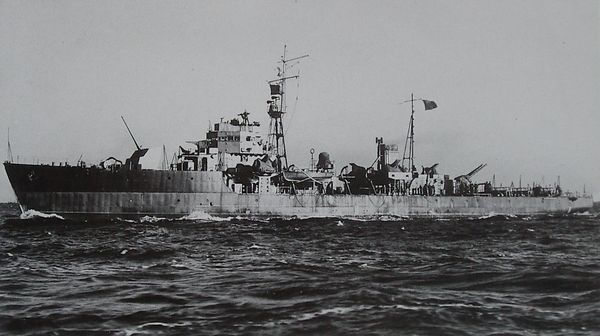You are not logged in.
Dear visitor, welcome to WesWorld. If this is your first visit here, please read the Help. It explains in detail how this page works. To use all features of this page, you should consider registering. Please use the registration form, to register here or read more information about the registration process. If you are already registered, please login here.

Quoted
Originally posted by BruceDuncan
"Automatic rapid fire" is not, as far as I know, a selectable option in SS 2.1 - "Automatic" yes, but "Automatic rapid fire" no. What exactly is meant here?
Quoted
Originally posted by ShinRa_Inc
Quoted
Originally posted by BruceDuncan
"Automatic rapid fire" is not, as far as I know, a selectable option in SS 2.1 - "Automatic" yes, but "Automatic rapid fire" no. What exactly is meant here?
Automatic is what's in the GUI (the program interface), Automatic Rapid Fire is what the report will spit out with that option.
Quoted
What is the breakdown?



Quoted
Originally posted by Rooijen10
I know 2x2=5, but 1939-1941=3? That's a new one!


Quoted
Originally posted by Rooijen10
At one point I was contemplating whether I should stick to the 3x1 layout or the slightly more unusual 1x2 and 1x1 of the Mikura (which is 1942). Because of the looks, I went for the latter. The photo of the Shisaka (which is 1944) was in my opinion the better looking photo of a vessel with such a gun layout on wiki so I used that one. I do not have the 120mm option so it is either 105mm or 5" and 5" was the closest option.
Quoted
you say it's based on the 1939 Shimushu in one post
Quoted
it's come up numerous times on the board that an ASW vessel has no real requirement for rapid, heavy fire.

Quoted
I was going off the Ukuru, since that is the picture you posted.

Quoted
Originally posted by Rooijen10
With the game Silent Service, I usually surfaced in order to engage the Kaibokans with the deck gun rather than wasting torpedoes on them...
... which didn't always go as planned. ^_^;;
Ah those were the days. Back then, those Kaibokans ruined my day when I tried to attack ships. Nowadays the idiotic opponents in Gran Turismo 5 who can't drive are the ones who ruin my day.
Quoted
Originally posted by Rooijen10
Quoted
you say it's based on the 1939 Shimushu in one post
The thing is that you should read the "it's" as "it was" and not as "it is". When you mess long enough with a design of HMS Hood, you may end up with something that more closely resembles KMS Bismarck. I think that that is one of the problems of this design. It is no longer the ship I started out with in SS2, and, adding the fact that I am looking a bit at the other classes of those escort ships and post pictures of the other classes, that is what is causing the confusion.
Quoted
it's come up numerous times on the board that an ASW vessel has no real requirement for rapid, heavy fire.
True, but I was thinking about the idea trying to force an enemy submarine to the surface as fast as possible (which was why I was looking at the Ukuru's ASW layout with its 16 DCTs) and have it submerge (permanently) even faster (which is why I was looking at the rapid, heavy fire option). the 105mm guns could possibly give me a 2x2 layout, a slightly higher ROF and thus more shells flying through the sky at a surfaced submarine.
Still, thinking of it now it might be a cheaper and better option to either use the 25mm guns to riddle the submarine full of holes, or add something like the 40mm or 50mm guns.
With the game Silent Service, I usually surfaced in order to engage the Kaibokans with the deck gun rather than wasting torpedoes on them...
... which didn't always go as planned. ^_^;;
Ah those were the days. Back then, those Kaibokans ruined my day when I tried to attack ships. Nowadays the idiotic opponents in Gran Turismo 5 who can't drive are the ones who ruin my day.
Quoted
I was going off the Ukuru, since that is the picture you posted.
I posted that because of the deckspace that the guns and ASW would take up if I were to go for such a ASW layout and the fact that if I were to add an autogyro, there would be no space to put it. Also, since I had that picture around, I used that one to base the freeboard on rather than the picture of the Shimushu.
What I mentioned about Hood and Bismarck is also true for the Shimushu and Ukuru but you end up a lot faster at the Ukuru than that you would end up at the Bismarck, especially if you decide to go for the main gun layout of the Mikura, which has the same layout as the Ukuru. Guess that's the difference between a 4 year gap and a 20 year gap.
Quoted
Originally posted by BruceDuncan
What I find interesting is the apparent recognition by the IJN that specialized escort ships are vital to the survival of Japan; a lesson that in the OTL the IJN never recognized until it was too late.
Quoted
Originally posted by Kaiser Kirk
Good bad or indifferent, my O-8 class has 20mm 'conning tower' armor intended to indicate the sail has armor. The point of the armor is more intended as anti-strafing than anti-ship, but would probably make light automatic HE fused weapons at range useless for 'riddling' them.
This post has been edited 1 times, last edit by "Kaiser Kirk" (Oct 24th 2011, 6:14am)
Forum Software: Burning Board® Lite 2.1.2 pl 1, developed by WoltLab® GmbH
